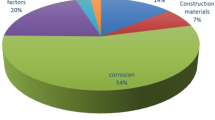Abstract
When the deviation between the actual pipelines and the ideal models cannot be neglected, the intersecting curve weld seam based on non-ideal models should be specially studied. This paper will introduce a novel method to quantify the deviation of the intersecting curve weld seam based on the non-ideal models. Weld location is a technical means for obtaining the actual position of weld seam, which may be used to obtain the location information of some key points on the intersecting curve. Combined with the information of weld location and the inherent characteristics of the intersecting curves, this paper analyzes the experimental results of actual intersecting curve welding, and all these works laid the foundation for the proposed algorithm. First of all, on the basis of previous studies, this paper introduces a kind of model for intersecting pipelines, which can cover most of the ways of coherence. Secondly, based on this model, the factors which may lead to the deviation of the theoretical intersecting curve from the actual intersecting curve are analyzed. Generally, there may be some connections or coupling between the sources of deviation. Against the above problem, the paper gives a solution to model each source of deviation and discuss the relationship among them, and then makes use of the information of weld location to quantify the main sources of deviation one by one, especially the quantification of the main pipes ovality. Finally, the correctness and flexibility of the algorithm are verified by the MATLAB simulation.
Similar content being viewed by others
References
Kiddee P, Fang Z, Tan M (2016) An automated weld seam tracking system for thick plate using cross mark structured light. Int J Adv Manuf Technol 87(9-12):3589–3603. https://doi.org/10.1007/s00170-016-8729-7
Mahajan A, Figueroa F (1997) Intelligent seam tracking using ultrasonic sensors for robotic welding. Robotica 15:275–281. https://doi.org/10.1017/S0263574797000313
Fridenfalk M, Bolmsjo G (2004) Design and validation of a universal 6D seam-tracking system in robotic welding using arc sensing. Adv Robot 18(1):1–21. https://doi.org/10.1163/156855304322753272
Kilic ZM, Altintas Y (2016) Generalized mechanics and dynamics of metal cutting operations for unified simulations. Int J Mach Tool Manu 104:1–13. https://doi.org/10.1016/j.ijmachtools.2016.01.006
Engin S, Altintas Y (2001) Mechanics and dynamics of general milling cutters. Part I: helical end mills. Int J Mach Tool Manu 41:2195–2212. https://doi.org/10.1016/S0890-6955(01)00045-1
Engin S, Altintas Y (2001) Mechanics and dynamics of general milling cutters. Part II: inserted cutters. Int J Mach Tool Manu 41:2213–2231. https://doi.org/10.1016/S0890-6955(01)00046-3
Chen YD, Wang TM (2013) Three-dimensional tool radius compensation for multi-axis peripheral milling. Chin J Mech Eng 26(3):547–554. https://doi.org/10.3901/CJME.2013.03.547
Zhou Y, Chirikjian GS (2004) Planning for noise-induced trajectory bias in onholonomic robots with uncertainty. Proc IEEE Int Conf Rob Autom 4596–4601
Ulrich S, Sasiadek JZ (2012) Real-time estimation and adaptive control of flexible joint space manipulators. Lect Notes Control Inf Sci 215–224. https://doi.org/10.1007/978-1-4471-2343-9_18
Bahrami-Samani M, Agahi M, Moosavian SAA (2006) Design and analysis of a welding robot. In: IEEE international conference on automation science and engineering, vol 2007. https://doi.org/10.1109/COASE.2006.326924
Ren FS, Chen SJ, Yin SY, Guan XY (2008) Modeling on weld position and welding torch pose in welding of intersected pipes. Trans China Welding Ins 29(11):33–36
Shi L, Tian XC (2014) Automation of main pipe-rotating welding scheme for intersecting pipes. Int J Adv Manuf Technol 77(5-8):955–964. https://doi.org/10.1007/s00170-014-6526-8
Shi L, Tian XC, Zhang CH (2015) Automatic programming for industrial robot to weld intersecting pipes. Int J Adv Manuf Technol 81(9-12):2099–2107. https://doi.org/10.1007/s00170-015-7331-8
Liu Y, Shi L, Tian XC (2018) Weld seam fitting and welding torch trajectory planning based on NURBS in intersecting curve welding. Int J Adv Manuf Technol 95(5-8):2457–2471. https://doi.org/10.1007/s00170-017-1374-y
Lu Y, Tian XC, Liang J (2010) Track control in automated welding of saddle curve. J Sci Ind Res 69 (11):811–817
Chen HB, Huang HY, Lin T, Zhang HJ, Chen SB (2013) Situation and development of intelligentized technology for arc welding robot. Electirc Welding Machine 43(4):8–15
Liu Y, Shi L, Tian XC (2017) Plasma cutting torch trajectory planning for main pipe hole cutting with welding groove and root face. Int J Adv Manuf Technol 93(9-12):4329–4343. https://doi.org/10.1007/s00170-017-0843-7
Craig JJ (2003) Introduction to robotics: mechanics and control, 3rd edn. Prentice Hall, London
Chunlong Fan, Chang Liu (2015) A novel algorithm for circle curve fitting based on the least square method by the points of the Newton’s rings. In: International conference on computers communications and systems, pp 256–260. https://doi.org/10.1109/CCOMS.2015.7562911
Piegl L, Tiller W (2003) The NURBS book, 2nd edn. Springer, Berlin
Yu JP, Shi P (2015) Approximation-based discrete-time adaptive position tracking control for interior permanent magnet synchronous motors. IEEE Trans Cybern 45(7):1363–1371. https://doi.org/10.1109/TCYB.2014.2351399
Funding
The authors gratefully thank the research funding by the National Key Research and Development Plan of China under grant no.2017YFB1303503.
Author information
Authors and Affiliations
Corresponding author
Additional information
Publisher’s Note
Springer Nature remains neutral with regard to jurisdictional claims in published maps and institutional affiliations.
Rights and permissions
About this article
Cite this article
Liu, Y., Shi, L. & Tian, X. Deviation quantification of the intersecting curve weld seam based on non-ideal models. Int J Adv Manuf Technol 97, 1347–1361 (2018). https://doi.org/10.1007/s00170-018-2010-1
Received:
Accepted:
Published:
Issue Date:
DOI: https://doi.org/10.1007/s00170-018-2010-1



